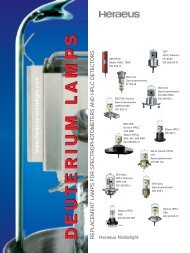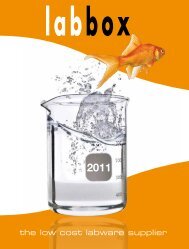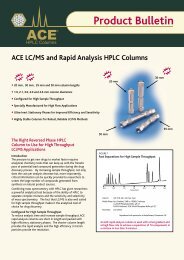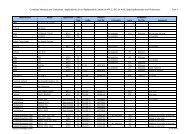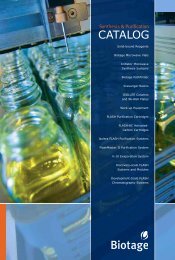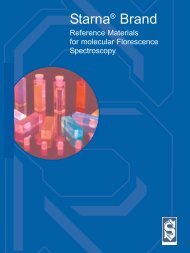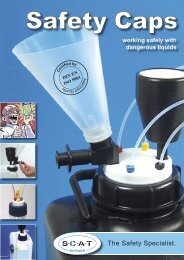PDF catalog - Teknolab AS
PDF catalog - Teknolab AS
PDF catalog - Teknolab AS
Create successful ePaper yourself
Turn your PDF publications into a flip-book with our unique Google optimized e-Paper software.
GUIDE QUICKSTART GUIDE TO SPE<br />
In principle, SPE is analogous to liquid-liquid extraction (LLE). As a liquid sample passes through the SPE<br />
column, compounds are ‘extracted’ from the sample and adsorbed onto the support or sorbent material in the<br />
column. Interferences can then be selectively removed from the column using the correct choice of wash or<br />
interference elution solvents. Finally, the desired analytes may be selectively recovered from the column by an<br />
elution solvent, resulting in a highly purified extract. The analyte concentration in this extract is often higher<br />
than in the original sample.<br />
Alternatively, an extraction column may be selected that retains the interferences present in the sample, but<br />
allows the analytes to pass through unretained, providing clean-up but not analyte trace enrichment.<br />
SPE sorbents have a typical mean particle size of 30-50 µm. Many organic solvents can flow through SPE<br />
columns or plates under gravity, but for aqueous samples and more viscous solvents, liquids must be passed<br />
through the sorbent bed using vacuum applied to the column outlet, positive pressure applied to the column<br />
inlet, or centrifugation (see figure 2).<br />
Figure 2. Techniques for processing ISOLUTE SPE columns<br />
SPE Sorbent / Mechanism Selection<br />
SPE columns are available in a wide range of sorbent chemistries. Each exhibits unique properties for retention<br />
of analytes through a variety of molecular interactions (referred to as retention mechanisms).<br />
The most common retention mechanisms in SPE are:<br />
• Non-polar (based on Van der Waals forces)<br />
• Polar (based on hydrogen bonding, dipole-dipole or pi-pi interactions)<br />
• Ion exchange (interactions between cations (positively charged species) and anions (negatively charged<br />
species))<br />
• Mixed-mode (combination of non-polar and ion exchange interactions)<br />
SPE sorbents in this <strong>catalog</strong> are classified by retention mechanism. Each sorbent offers a unique combination<br />
of these properties which can be applied to a wide variety of specific extraction problems.<br />
143





